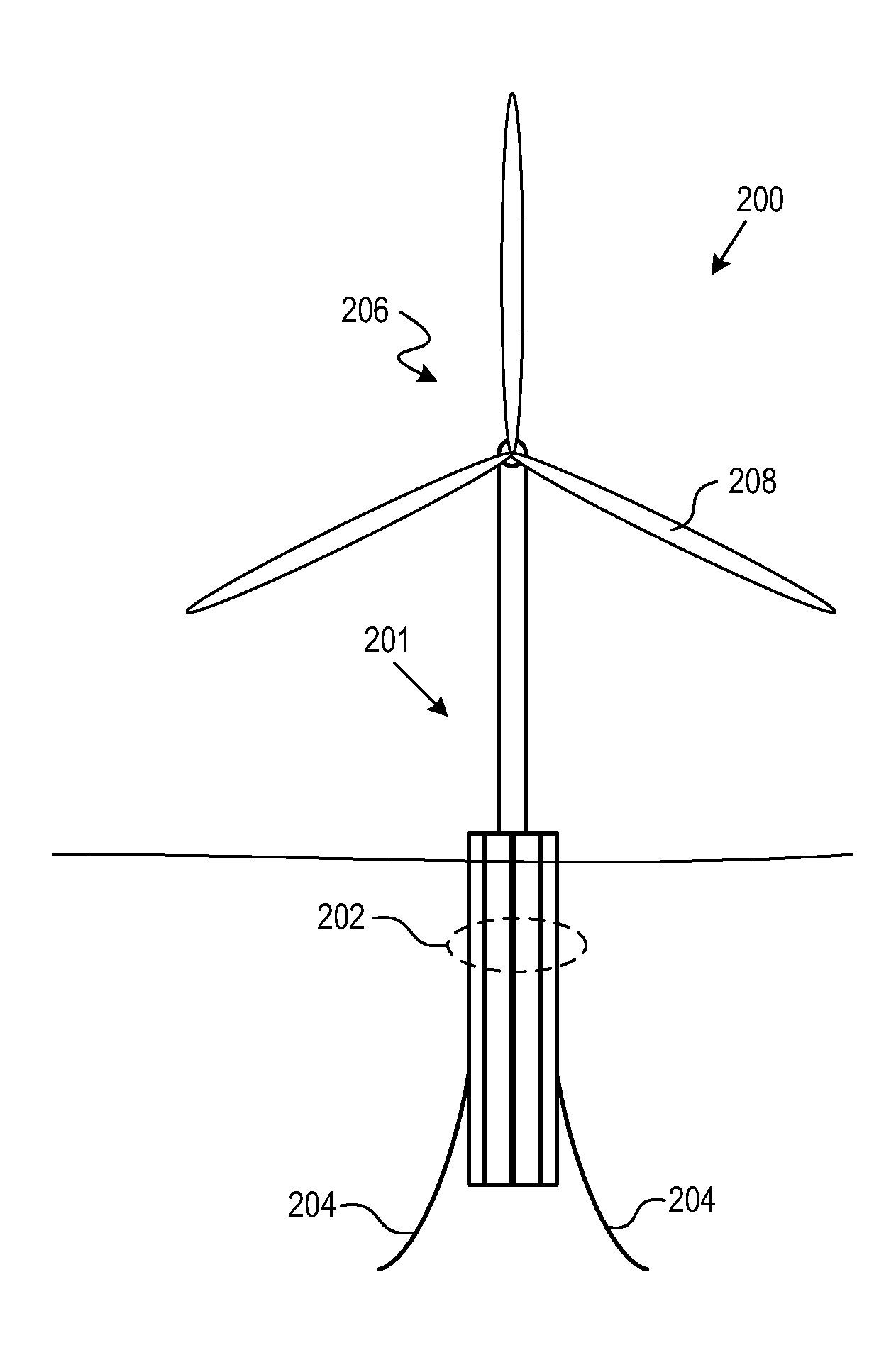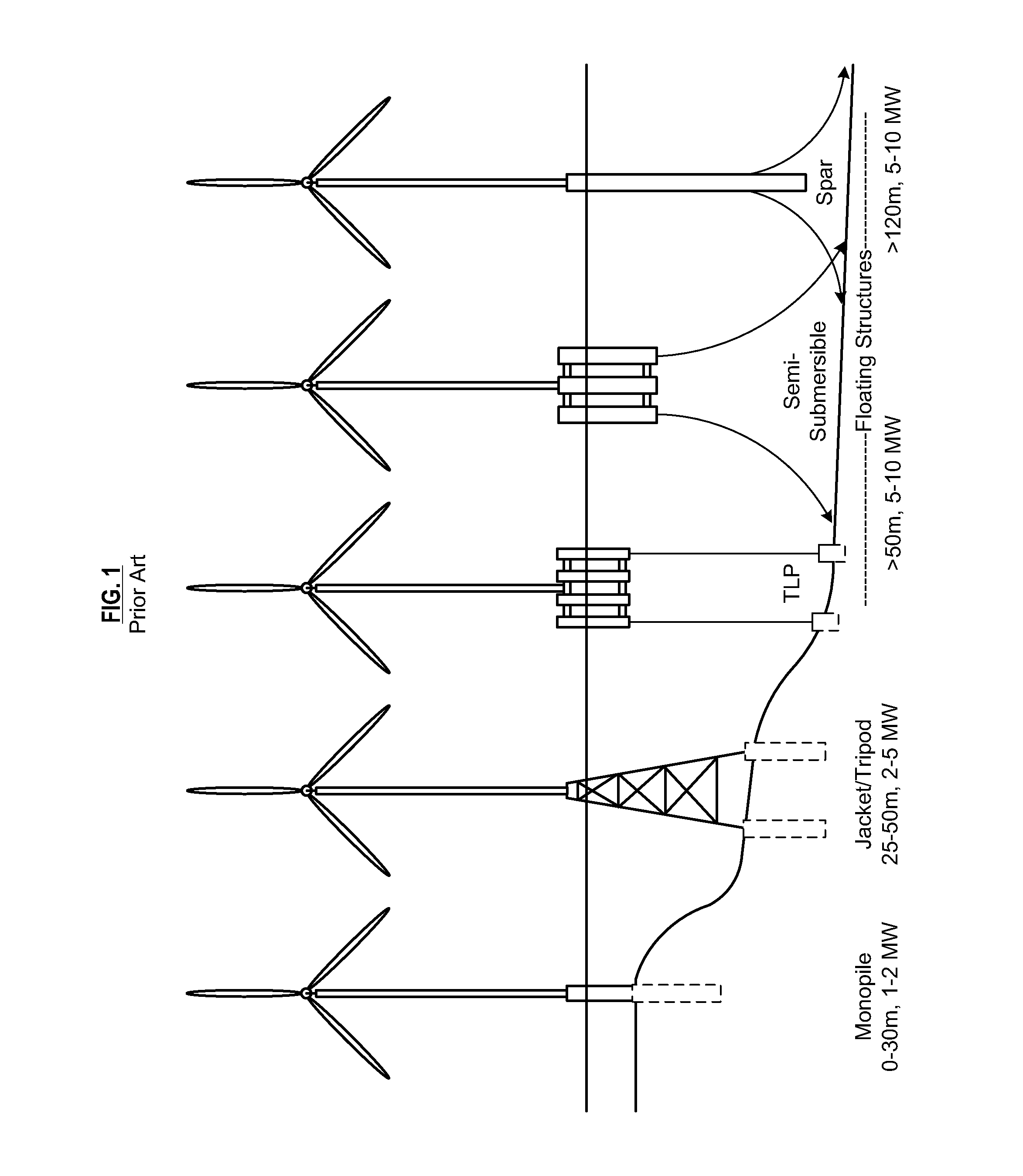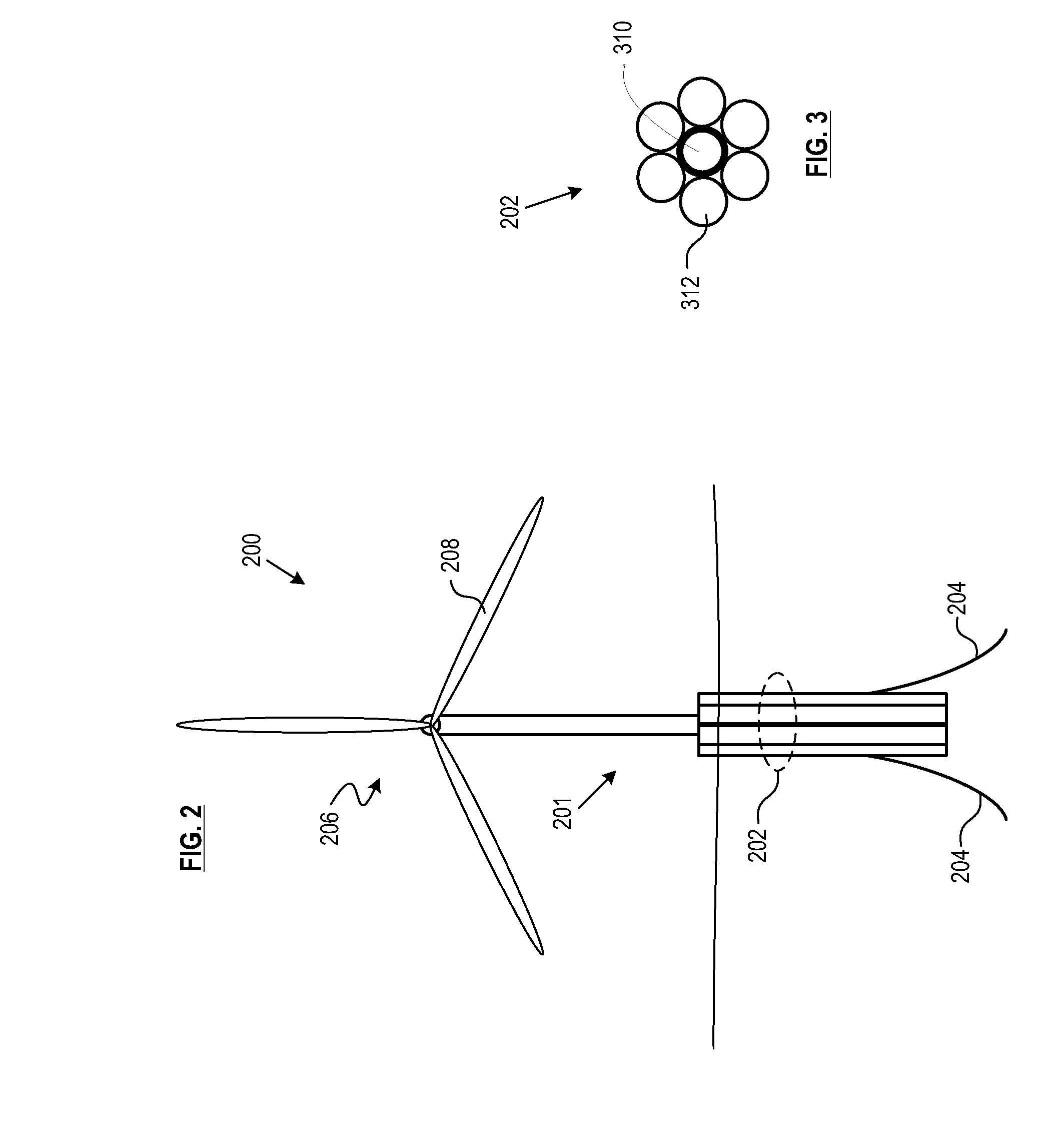On-site Fabricated Fiber-Composite Floating Platforms for Offshore Applications
a technology of floating platforms and fiber composites, which is applied in the direction of vessels, machines/engines, transportation and packaging, etc., can solve the problems of not being able to provide some of the benefits of vertical fabrication, no other process known to the inventor is capable of producing multi-shot, continuous fiber composites,
- Summary
- Abstract
- Description
- Claims
- Application Information
AI Technical Summary
Benefits of technology
Problems solved by technology
Method used
Image
Examples
Embodiment Construction
[0049]Definitions. The terms appearing below are provided with the follow explicit definitions for use in this description and the appended claims.[0050]Continuous-fiber composite means a fiber composite in which fibers are continuous throughout that the composite, as opposed to being chopped or short (i.e., discontinuous).[0051]Shot refers to the amount of resin that is required to fill a mold cavity. A “multi-shot” article requires multiple, sequential resin fills and cures within the mold cavity.[0052]Workpiece means the structure that is produced or the assemblage (e.g., core, fiber, resin) that will form that structure in a single shot in the molding region. In the context of multi-shot articles, the workpiece therefore represents a portion or segment of the final composite article (e.g., a segment of the cold water pipe, etc).[0053]Continuity of fiber means that there is no discontinuity or break in fibers between the workpieces that compose a multi-shot composite article. To ...
PUM
| Property | Measurement | Unit |
|---|---|---|
| Length | aaaaa | aaaaa |
| Thickness | aaaaa | aaaaa |
Abstract
Description
Claims
Application Information
 Login to View More
Login to View More - R&D
- Intellectual Property
- Life Sciences
- Materials
- Tech Scout
- Unparalleled Data Quality
- Higher Quality Content
- 60% Fewer Hallucinations
Browse by: Latest US Patents, China's latest patents, Technical Efficacy Thesaurus, Application Domain, Technology Topic, Popular Technical Reports.
© 2025 PatSnap. All rights reserved.Legal|Privacy policy|Modern Slavery Act Transparency Statement|Sitemap|About US| Contact US: help@patsnap.com



